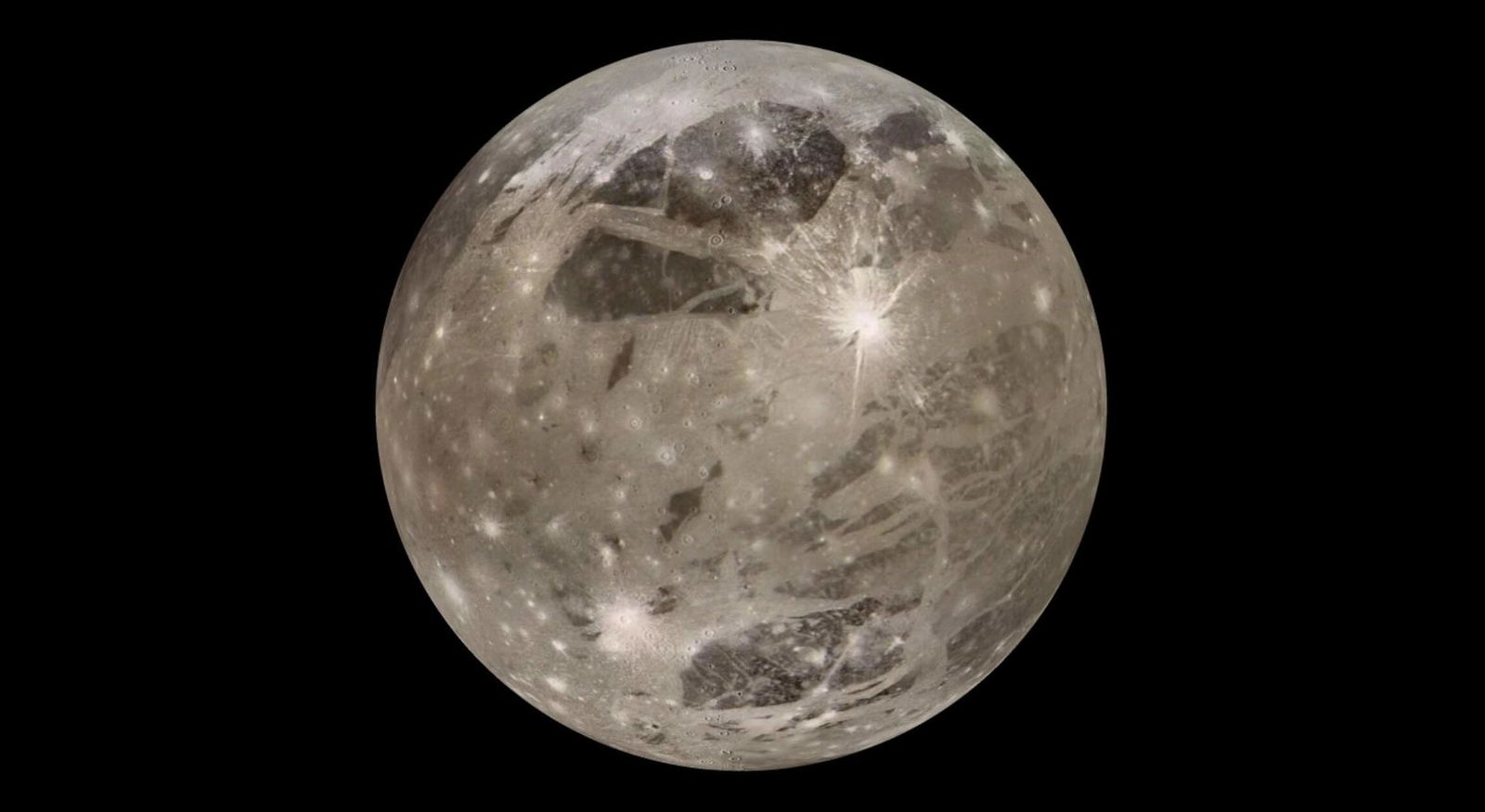A massive asteroid, 20 times larger than the one that killed the dinosaurs, knocked Jupiter’s moon Ganymede off its axis about four billion years ago, according to new research.
Detailed in a new study, the new findings sheds light on one of the largest known collisions in the solar system, providing insights into cosmic impacts and the evolution of celestial bodies.
The Importance of Ganymede
Ganymede is not only the largest of Jupiter’s moons but also the largest moon in the solar system, even surpassing some planets, such as Mercury, in size. It is covered in ice, beneath which lie oceans of liquid water that could potentially harbor life. The moon’s surface is marked by a system of furrows, which earlier scientists believed originated from impact sites.
“The Jupiter moons Io, Europa, Ganymede, and Callisto all have unique characteristics, but the furrows on Ganymede caught my attention,” said Kobe University planetologist Hirata Naoyuki, author of the new study, explaining his interest in Ganymede. “We know these features were created by an asteroid impact about 4 billion years ago, but we were unsure of the impact’s size and its effects on the moon.”
Connecting Ganymede and Pluto
Since the 1973 Pioneer 10 mission and through the 2023 Juno flyby, scientists have been capturing images of Ganymede’s surface. However, there is still limited data on this massive moon. Because Ganymede is tidally locked, the same side always faces away from Jupiter. Hirata found it intriguing that the largest furrow system, the Galileo-Maurius furrow system, emanates from a point on the moon’s farthest side from Jupiter, along its tidal axis. While previous researchers overlooked this correlation, Hirata drew parallels to a similar feature on Pluto.
Hirata notes similarities with the Sputnik Planitia impact basin on Pluto, discovered during NASA’s New Horizons mission flyby in 2015. Located at 25° north latitude and 175° longitude, Sputnik Planitia is thought to have a gravity anomaly that reoriented Pluto’s axis. Hirata suggests that the 20° deviation in latitude may result from a stabilizing effect of Pluto’s remaining bulge against the gravity anomaly.
Studying the Cosmic Impact
Hirata developed detailed mathematical models to analyze the potential impact on Ganymede. Initially, he struggled to determine the size and mass of the object responsible for the crater due to the absence of a clearly identifiable rim, which left only an estimated diameter range of 1,400 to 1,600 kilometers. Instead, he focused on the size of the ejecta blanket left behind.
By studying the shape of the ejecta blanket, Hirata estimated that the original asteroid was about 300 kilometers wide. It wasn’t just the impact but also the settling of the ejecta that contributed to Ganymede’s reorientation. Through his models, Hirata determined that a 300-kilometer-wide asteroid was just above the threshold needed to cause such a change. A second round of more detailed models, considering the remnant bulge similar to Pluto’s, further supported his findings.
Continuing to Investigate the Moons of Jupiter
“I want to understand the origin and evolution of Ganymede and other Jupiter moons,” Hirata says of his future work. “The giant impact must have had a significant effect on the early evolution of Ganymede, but the thermal and structural impacts on its interior have not yet been investigated. I believe further research on the internal evolution of ice moons could be conducted next.” He predicts that more exploration of Ganymede will uncover topographical profiles and gravity anomalies that further support the impact hypothesis. However, he also recommends studying alternative theories for Ganymede’s reorientation, such as variations in the lithosphere’s thickness.
Two major missions are planned to gather more data on Jupiter’s moons. The European Space Agency’s JUICE Space Probe, launched in April 2023, is expected to reach Ganymede in 2034 and conduct a six-month orbital mission. NASA’s Europa Clipper mission, targeting a launch starting October 10, aims to study Europa, another of Jupiter’s moons.
The new paper, “Giant Impact on Early Ganymede and Its Subsequent Reorientation,” was published in Scientific Reports on September 3, 2024.
Ryan Whalen covers science and technology for The Debrief. He holds a BA in History and a Master of Library and Information Science with a certificate in Data Science. He can be contacted at ryan@thedebrief.org, and follow him on Twitter @mdntwvlf.

